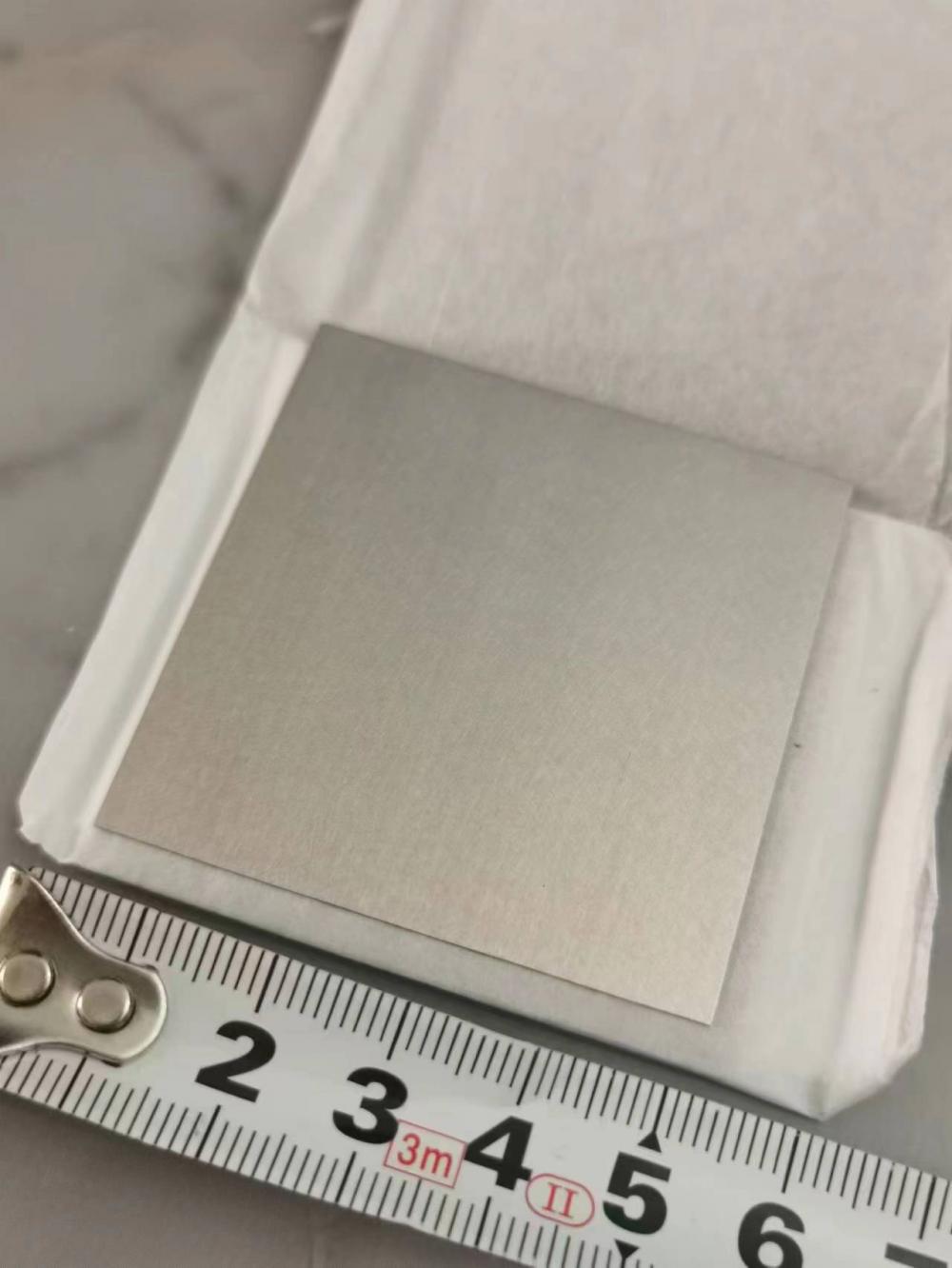Molybdenum Copper Alloys
3 year agoStampable Copper-Molybdenum-Copper (CMC) Laminated Composites
Our Copper-Molybdenum-Copper (CMC) composites are engineered multi-layer materials designed to provide an optimal balance of thermal conductivity and controlled thermal expansion. Consisting of a molybdenum core clad with oxygen-free copper, CMC is an ideal Heat Sink Material for robust Electronics Packaging. Uniquely, our CMC material possesses superior formability, allowing it to be stamped into complex shapes—a capability not found in competing products.
Technical Specifications
| Grade (Cu:Mo:Cu Thickness Ratio) | Density (g/cm³) | CTE (10⁻⁶/K) | Thermal Conductivity X-Y (W/m·K) | Thermal Conductivity Z (W/m·K) |
|---|---|---|---|---|
| 13:74:13 | 9.88 | 5.6 | 200 | 170 |
| 1:4:1 | 9.75 | 6.0 | 220 | 180 |
| 1:3:1 | 9.66 | 6.8 | 244 | 190 |
| 1:2:1 | 9.54 | 7.8 | 260 | 210 |
| 1:1:1 | 9.30 | 8.8 | 305 | 250 |
| S-CMC (5:1:5:1:5) | 9.20 | 6.1 (20-800°C) | 350 | 295 |
Product Images and Videos

Product Features and Advantages
Breakthrough Stampability
Unlike standard CMC materials, our product can be stamped to create complex 3D features like bosses and cavities. This revolutionary feature enables integrated, single-piece designs, reducing assembly complexity and cost for advanced Optoelectronic Packaging.
Robust Interfacial Bonding
Our proprietary rolling and bonding process creates an exceptionally strong interface that can withstand repeated thermal shocks up to 1000°C without delamination, ensuring maximum reliability in harsh operating environments.
Excellent Surface Properties
The oxygen-free copper surface provides a naturally hermetic seal and is ideal for standard plating processes (e.g., Ni/Au), ensuring reliable soldering and wire bonding.
Application Scenarios
- 5G/6G Power Devices: Heat spreaders and bases for RF power amplifiers.
- High-Frequency Microwave Devices: Lids and housings for hermetically sealed packages.
- Heat Spreaders: Efficiently conduct heat away from hotspots in compact electronic modules.
- Integrated Thermal Solutions: Stamped components that serve as both a heat sink and a structural element.
Benefits for Customers
- Greater Design Freedom: The ability to stamp complex shapes allows engineers to create more integrated and efficient thermal solutions.
- Reduced Manufacturing Costs: Stamping is significantly more cost-effective than CNC machining for high-volume production, lowering the total cost per part.
- Enhanced Product Reliability: Superior interfacial strength and inherent hermeticity lead to longer-lasting and more durable electronic devices.
- Simplified Assembly: Integrated, single-piece designs reduce part count and streamline the assembly process.
Certifications and Compliance
All our products are manufactured under a strict quality management system certified to ISO 9001:2015, guaranteeing quality, consistency, and traceability.
Customization Options
We offer extensive customization to meet your exact requirements:
- Layer Thickness Ratio: Adjust the Cu/Mo/Cu ratio to precisely tune the CTE.
- Specialty Grades: We offer S-CMC (multi-layer for symmetry) and HS-CMC (enhanced Z-axis conductivity for 5G).
- Stamping & Machining: We can deliver finished parts, from simple flat plates to complex stamped components.
Production Process and Quality Control
Our production process involves multi-layer roll bonding under immense pressure and controlled temperatures to ensure a perfect metallurgical bond. Every batch undergoes rigorous quality checks, including thermal shock testing and metallographic analysis, to verify interfacial integrity and material properties.
Customer Testimonials and Reviews
"The stampable CMC from this company revolutionized our package design. We were able to replace a multi-part machined assembly with a single, cost-effective stamped component without sacrificing thermal performance. A true game-changer." - Senior Packaging Engineer, RF Communications Company
FAQ
- Q1: What is the main advantage of stampable CMC?
- A1: Stampability allows for the high-volume, low-cost production of complex 3D shapes. This enables more integrated designs, reduces assembly steps, and lowers the overall cost compared to traditional CNC machining of heat sink components.
- Q2: How does CMC compare to MoCu composites?
- A2: CMC's copper surface makes it inherently hermetic and easy to plate. While MoCu offers lower density, CMC provides a robust, cost-effective solution, especially when complex stamped shapes are required for advanced Ceramic Packages.
Similar Video Recommendation
If you are interested in the product, contact Bossgoovideo.com for more information
- *To:
- Shaanxi Xinlong Metal Electro-mechanical Co., Ltd.
- *Message:
-
Submit
Main Product:
Tungsten Heavy Alloys,
Heat Sink ,
Electronic Packaging,
Rhenium Alloys,
Tantalum Alloys,
Nickel Based Braze Alloy









